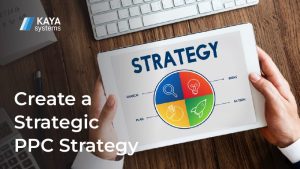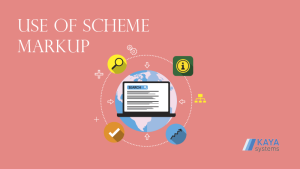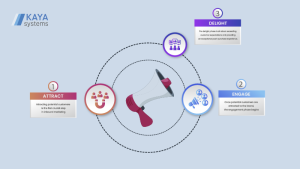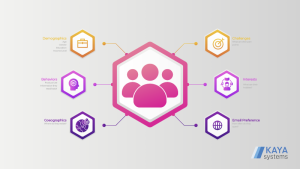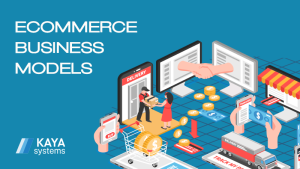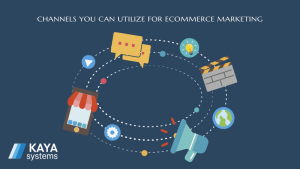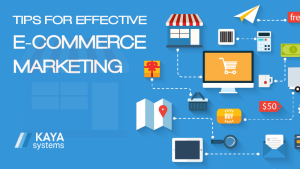Link building is a crucial aspect of any successful Search Engine Optimization (SEO) strategy for Software as a Service (SAAS) companies. As SAAS businesses operate primarily online, building a robust online presence and gaining higher search engine rankings are paramount to attract potential customers and increase brand visibility. SAAS Link building involves the process of acquiring hyperlinks from external websites that direct users to your website. These links act as pathways, not only driving organic traffic but also serving as a trust signal to search engines, indicating the credibility and relevance of your platform.
In the rapidly evolving digital world, Software as a Service (SAAS) companies are revolutionizing how businesses and individuals access and utilize software applications. With countless SAAS solutions available, standing out in this competitive market is essential for success. This is where link building comes into play as a powerful strategy to elevate a SAAS platform’s online presence and authority.
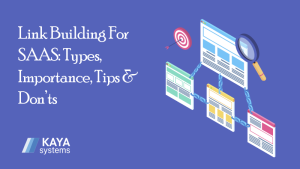
SAAS Link building involves acquiring high-quality backlinks from reputable and relevant websites within the industry. These backlinks act as virtual endorsements, signaling to search engines that the platform is trustworthy and valuable. As a result, search engines are more likely to reward the website with higher rankings, leading to increased organic traffic and potential customer conversions. In this context, link building is not merely a technical aspect of SEO, but an integral part of the overall digital marketing strategy for these companies, helping them reach their target audience effectively.
In addition to its impact on search engine rankings, link building serves as a pathway for users to discover and explore different solutions. When reputable websites link to a platform, it introduces the solution to a broader audience, expanding its visibility and potential customer base. The SAAS industry thrives on innovation, and link building acts as a conduit to showcase novel solutions to potential users who may be seeking the most efficient, user-friendly, and effective software tools for their needs.
Types of SAAS Link Building:

- Content Marketing and Guest Posting:
Content marketing is a popular link building strategy where SAAS companies create high-quality, informative, and engaging content relevant to their industry or target audience. This content can be in the form of blog posts, articles, infographics, or videos. By reaching out to authoritative websites or industry influencers, SAAS companies can offer their content as guest posts. These guest posts include backlinks to the SAAS website, thereby attracting organic traffic and improving search engine rankings. Utilizing professional link building services can aid in identifying reputable websites for guest posting opportunities, ensuring the content reaches a broader audience and enhances the SAAS platform’s visibility.
- Influencer Outreach and Partnerships:
Influencer outreach is another effective SAAS link building tactic. SAAS companies can collaborate with influencers or key opinion leaders in their industry to promote their products or services. These influencers often have a substantial online following, and by including backlinks to the SAAS platform in their content, it can drive relevant traffic and potential customers. Building partnerships with other SAAS companies can also lead to link exchanges, where both parties link to each other’s platforms, benefiting from each other’s audiences. Expert link building services can help identify and engage with relevant influencers and potential partners, ensuring a successful link building campaign.
- Resource Link Building:

Resource link building involves creating valuable resources such as guides, tutorials, or industry reports that other websites find useful for their audience. SAAS companies can create comprehensive guides or e-books related to their niche and offer them for free on their website. When other websites find these resources valuable, they may naturally link to them, thus boosting the SAAS platform’s authority and search engine rankings. Professional link building services can aid in crafting compelling resources and promoting them to relevant websites, increasing the chances of acquiring valuable backlinks.
- Broken Link Building:
Broken link building is a unique strategy where SAAS companies identify broken or non-functional links on external websites and offer alternative, relevant content to replace those broken links. By providing a valuable replacement link that adds value to the website’s visitors, SAAS companies can earn backlinks and improve their SEO standing. Utilizing skilled link building services can assist in finding broken link opportunities and reaching out to website owners for link replacements.
- Brand Mentions and Unlinked Brand Outreach:
Monitoring brand mentions across the internet and identifying unlinked mentions of the SAAS company provides an excellent opportunity for link building. SAAS companies can approach websites or authors who have mentioned their brand but not linked to their website, requesting a backlink. This helps in converting brand mentions into valuable backlinks and enhances the SAAS platform’s online visibility and authority. Professional link building services can efficiently track brand mentions and handle outreach efforts to maximize unlinked brand mention conversions.
Incorporating these various SAAS link building strategies, including content marketing and guest posting, influencer outreach, resource link building, broken link building, and brand mention outreach, can significantly enhance the online presence, search engine rankings, and credibility of a SAAS platform. Partnering with experienced link building services can further amplify the effectiveness of these strategies, ensuring the SAAS company stays ahead of the competition and attracts a broader customer base.
Importance of SAAS Link Building:

In the highly competitive landscape of the Software as a Service (SAAS) industry, SEO link building emerges as a pivotal strategy for SAAS companies to gain a competitive edge and thrive in the digital marketplace. As the majority of SAAS businesses operate in the online realm, the importance of link building cannot be overstated. SEO link building plays a crucial role in improving a SAAS platform’s online visibility, authority, and credibility, ultimately driving organic traffic, attracting potential customers, and boosting overall business success.
- Enhances Search Engine Rankings:
SEO link building is a fundamental factor in determining a website’s search engine ranking. When reputable and relevant websites link back to a SAAS platform, search engines interpret these backlinks as indicators of the platform’s trustworthiness and value. As a result, search engines are more likely to reward the website with higher rankings, making it more visible to users searching for related products or services. Improved search engine rankings lead to increased organic traffic, as users tend to click on websites that appear on the first page of search results, ultimately benefiting the SAAS platform’s online presence and brand visibility.
- Drives Organic Traffic:
One of the primary goals of any SAAS company is to attract relevant and targeted traffic to their website. SEO link building plays a pivotal role in achieving this objective. As reputable websites with significant traffic link to the SAAS platform, it exposes the platform to a broader audience, potentially leading to a surge in organic traffic. High-quality backlinks act as virtual pathways that direct users to the SAAS website, allowing them to discover the products and services offered. Moreover, as organic traffic is often composed of users actively seeking solutions in the SAAS industry, the chances of converting them into paying customers significantly increase.
- Establishes Authority and Credibility:

In the vast sea of SAAS companies, establishing authority and credibility is essential for building trust with potential customers. SEO link building enables SAAS platforms to position themselves as authoritative sources in their industry. When reputable websites and influencers link to the SAAS platform, it validates the platform’s expertise and offerings. This validation, in turn, instills confidence in potential customers, making them more likely to choose the platform over competitors. Furthermore, a network of high-quality backlinks showcases the SAAS platform as a reliable and valuable solution, reinforcing its position as a thought leader in the industry.
- Expands Brand Visibility and Recognition:
SEO link building helps expand the reach and recognition of a SAAS brand. As the platform’s backlinks appear on various reputable websites and relevant industry platforms, more users become aware of the brand’s existence. Increased brand visibility leads to brand recognition, ensuring that potential customers remember the platform when searching for relevant products or services. This heightened recognition also fosters word-of-mouth referrals, where satisfied customers may recommend the SAAS platform to their peers or colleagues, further bolstering its reputation and attracting more customers.
In conclusion, SEO link building holds immense importance for SAAS companies looking to thrive in the competitive digital landscape. By improving search engine rankings, driving organic traffic, establishing authority and credibility, and expanding brand visibility, link building plays a vital role in the success and growth of a SAAS platform. As the SAAS industry continues to evolve, a strategic and well-executed link building strategy remains a cornerstone of effective digital marketing, helping SAAS companies build a strong online presence, attract their target audience, and stand out in the competitive market.
Some Important Tips For SAAS Link Building

Backlink building is a fundamental aspect of any successful link building strategy for Software as a Service (SAAS) companies. Building high-quality backlinks not only improves search engine rankings but also drives organic traffic and enhances the overall online visibility of the SAAS platform. Here are some valuable tips for effective SAAS backlink building:
- Create Valuable and Shareable Content:
Producing high-quality, informative, and shareable content is the foundation of successful backlink building. SAAS companies should focus on creating content that addresses the pain points of their target audience and provides valuable insights or solutions. Content formats such as blog posts, industry reports, infographics, and video tutorials tend to attract more backlinks. When other websites find the content valuable and relevant to their audience, they are more likely to link back to it, driving referral traffic and improving the SAAS platform’s authority.
- Guest Posting and Outreach:
Guest posting on reputable websites and industry blogs can significantly boost backlink opportunities for SAAS companies. Outreach to relevant websites and influencers in the SAAS industry is essential to secure guest posting opportunities. When writing guest posts, focus on providing unique and valuable insights while subtly incorporating links back to your SAAS platform. This strategy not only earns backlinks but also exposes the SAAS platform to a wider audience, increasing its reach and potential customer base.
- Collaborate with Industry Influencers:
Partnering with industry influencers or thought leaders is a powerful way to acquire quality backlinks. Influencers often have a large and engaged audience, making their endorsement of the SAAS platform highly valuable. Collaborate with influencers for product reviews, interviews, or joint content creation, and ensure that they include backlinks to the SAAS platform in their content. These backlinks not only drive traffic but also boost the platform’s credibility and authority in the eyes of search engines and potential customers.
- Monitor Brand Mentions and Convert Unlinked Mentions:
Keeping track of brand mentions across the web is crucial for backlink building. Identify instances where your SAAS platform is mentioned but not linked to and reach out to the website owners or authors to request a backlink. By converting unlinked mentions into linked ones, you can enhance the platform’s online visibility and authority.
- Engage in Online Communities and Forums:

Actively participating in relevant online communities, forums, and Q&A platforms can help generate backlinks naturally. Provide valuable insights and solutions to users’ questions and include links to relevant resources on your SAAS platform when appropriate. However, avoid spamming or overly promotional behavior, as it can harm your reputation and hinder backlink opportunities.
- Leverage PR and Press Coverage:
PR efforts and press coverage can lead to authoritative backlinks from media outlets and reputable websites. Consider issuing press releases for significant updates, new features, or partnerships related to your SAAS platform. When media outlets cover these developments, they are likely to include backlinks to your platform, bolstering your SEO and brand reputation.
- Focus on Local SEO:
If your SAAS platform caters to specific geographical regions, focus on local SEO strategies to attract local backlinks. Partner with local businesses, sponsor community events, or participate in local industry gatherings to gain exposure and acquire relevant local backlinks.
In conclusion, backlink building is a crucial aspect of a successful SAAS link building strategy. By creating valuable content, leveraging guest posting, collaborating with industry influencers, monitoring brand mentions, engaging in online communities, and focusing on local SEO, SAAS companies can effectively acquire high-quality backlinks, enhancing their online visibility, authority, and potential for attracting targeted organic traffic. Implementing these tips strategically will help SAAS platforms stand out in the competitive market and drive growth and success in the digital landscape.
Don’ts of Link Building For SAAS Companies

Link building is an essential aspect of SEO for SAAS companies, but it’s crucial to avoid certain practices that could harm their online presence and reputation. Here are some “Don’ts” of link building for SAAS companies:
Don’t engage in spammy link practices: Avoid buying links or participating in link schemes that aim to manipulate search engine rankings. Such tactics may provide short-term gains but can lead to severe penalties from search engines.
Don’t focus solely on quantity over quality: Building numerous low-quality backlinks can hurt your site’s credibility. Instead, aim for high-quality, relevant links from authoritative sources in your industry.
Don’t use irrelevant anchor text: Ensure that the anchor text used for your links is relevant to the content it’s linking to. Using generic or unrelated anchor text can raise red flags for search engines.
Don’t ignore link context: Context matters when it comes to link building. Make sure the websites linking to you are contextually relevant to your SAAS product or service.
Don’t overlook broken or toxic links: Regularly audit your backlinks and disavow any toxic or spammy links that could harm your site’s ranking.
Don’t forget about diversity: Aim for a diverse link profile. Relying on a single type of link or a handful of sources can make your backlink profile appear unnatural.
Don’t neglect social signals: While social media links may not directly impact search rankings, they play a role in promoting your content and driving traffic, which indirectly affects your SEO efforts.
Don’t use irrelevant guest posting: Guest posting can be beneficial, but only if the content is placed on relevant and authoritative websites. Avoid submitting guest posts on unrelated or low-quality sites solely for link building purposes.
Don’t engage in excessive reciprocal linking: Exchanging links with other websites solely for the purpose of link building is not a recommended practice. Focus on building natural, one-way links.
Don’t disregard local link opportunities: If your SAAS company serves a specific location, consider building links from local directories and industry-specific websites in that area.
Don’t use automated link-building tools: Automated link-building tools or services often produce low-quality and spammy links, which can harm your site’s reputation.
Don’t neglect user experience: Ensure that the sites you’re getting links from provide a positive user experience. Links from sites with slow loading times or poor usability may not be as valuable.
Conclusion
In the fiercely competitive world of SaaS companies, link building plays a crucial role as the lifeblood for success. A well-executed link building strategy not only enhances online visibility but also establishes industry authority. The key lies in creating valuable and shareable content that resonates with the target audience, leading to natural backlinks. As the content marketing landscape evolves, link building remains a potent tool for driving exponential growth, connecting SaaS companies with their audience, and achieving unprecedented success in the ever-changing realm of technology and innovation. Embrace the art of link building, and witness your SaaS business soar to new heights.
















